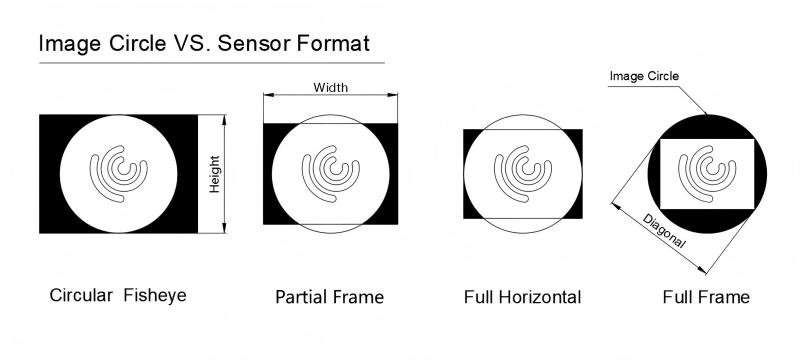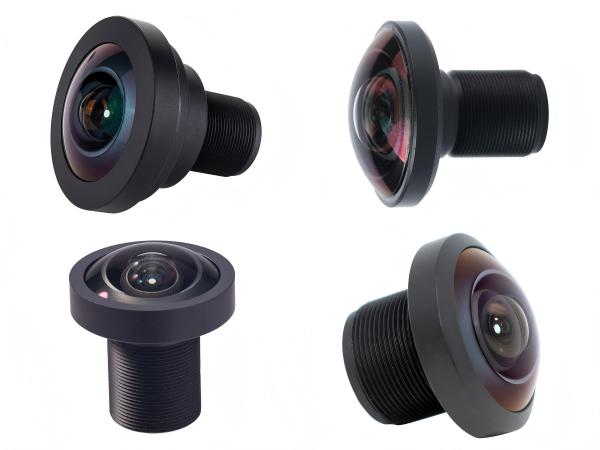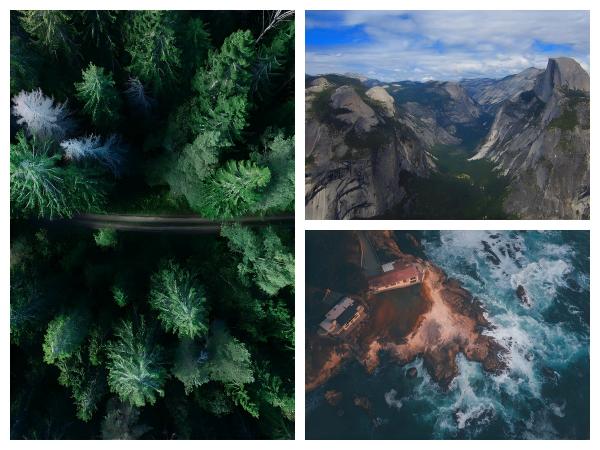What is a fisheye lens? Fisheye lens is an extreme ultra-wide-angle lens with two main features: short focal length and wide field of view. “Fisheye lens” is its common name.
In order to maximize the viewing angle of the lens, the front lens of this lens is very short in diameter and bulges toward the front of the lens in a parabolic shape, which is quite similar to the eyes of a fish, hence the name “fisheye lens”. People also call the images taken by it “fisheye images”.
The field of view of the fisheye lens is extremely large, and a frame of image it captures contains very rich information, so it does not need to rotate or scan and can work in a staring manner. Combined with the advantages of small size and strong concealment, the fisheye lens has unique application value in various fields.
1.The principle of fisheye lens
When the human eyeball rotates to observe, the viewing angle can be expanded to 188 degrees. When the eyeball does not rotate, the effective viewing angle is only 25 degrees. Similar to the lens of an ordinary camera (viewing angle 30-50 degrees), the lens of the human eye is also oblate, with a narrow viewing angle, but it can see things farther away.
Unlike the human eye, the lens in the fish eye is spherical, so although it can only see relatively close objects, it has a larger viewing angle (viewing angle 180-270 degrees), which means it can see more widely.
The imaging principle of fisheye lens
Conventional wide-angle lenses use a straight-line design to minimize distortion. Fisheye lenses, on the other hand, usually use a nonlinear structure. The physical properties of this structure determine its ultra-wide-angle characteristics that are far greater than those of ordinary lenses, but it also leads to inevitable “barrel distortion.”
That is, under the same area, the amount of information near the center of the fisheye image is the largest and the deformation is the smallest, while as the radius increases, the amount of information decreases and the deformation gradually increases.
Barrel distortion is a double-edged sword: in scientific research, a lot of effort is put into correcting it in order to obtain ultra-wide-angle fields of view while reducing image distortion, while in fields such as film art, barrel distortion can give images a bold and unique look.
2.History of Fisheye Lens
The history of fisheye lenses can be traced back to the early 20th century. In 1906, American physicist Robert W. Wood first proposed the concept of fisheye lens. He used fisheyes to form 180° images of the water surface from the bottom of the water. He thought of imitating the working environment of fisheyes and created a fisheye lens that could form hemispherical images.
In 1922, W. N. Bond improved Wood’s “fisheye lens”. In the 1920s, fisheye lenses were often used in meteorology to study cloud formation because of their wide viewing angle, which could capture the entire sky. In the 1940s, Robin Hill truly created the fisheye lens and used it for commercial purposes. He improved the relative illumination of the fisheye lens and reduced the F number of the system.
By the 1960s, with the mass production of fisheye lenses, fisheye lenses were favored by various fields and began to truly become one of the mainstream lenses for movies, extreme sports and scientific research.
The fisheye lenses
At the beginning of the 21st century, the popularity of digital cameras and the advancement of photography technology made fisheye lenses begin to enter the field of vision of ordinary consumers. There are many different models and brands of fisheye lenses on the market, which not only have wide-angle effects, but also have high definition and color reproduction, which can meet the requirements of photography enthusiasts for picture quality.
3.Application of fisheye lens
Fisheye lenses are widely used in many fields due to their unique optical design and ability to capture ultra-wide viewing angles.
Film art applications
Using a fisheye lens when shooting a scene will make the audience feel lost and immersive. For example, when a character wakes up with a severe hangover and is unsure of where he is, a fisheye lens can present a distorted first-person worldview to the audience. In addition, fisheye lenses are also essential for filming scenes such as simulated security recordings and simulated peephole observations of anti-theft doors.
Extreme sports
A fisheye lens is a must-have for shooting extreme sports such as skateboarding and parkour. It allows the photographer to get a full view of the skater while focusing on the skateboard.
Fisheye lenses are often used to shoot extreme sports
Monitoring applications
In security monitoring, the wide-angle field of view of fisheye lenses can cover a wider area and eliminate some blind spots. They can be used to monitor large areas, such as halls, warehouses, parking lots, etc., to provide panoramic monitoring capabilities and improve monitoring efficiency and safety. For example, a fisheye camera installed in a shopping mall can monitor the entire shopping area without the combination of multiple ordinary cameras.
Virtual reality
Fisheye lenses can be used to capture panoramic images or videos of an environment, providing more realistic content scenes for virtual reality and augmented reality technologies. Fisheye lenses allow VR content creators to capture a wider perspective of the virtual world, mimicking the natural human vision and enhancing the overall sense of immersion. For example, in the field of virtual tourism, fisheye lenses can capture panoramic scenes, take users to distant destinations, and provide an immersive travel experience.
Aerial photography and drone photography
Fisheye lenses are also common in aerial photography and drone photography, which can capture a wider range of scenes and provide more ornamental and impactful pictures.
Fisheye lenses are often used for aerial photography and drone photography
Scientific research
In the field of scientific research, fisheye lenses are also widely used in geological exploration, astronomical observation, medical imaging, etc., and can provide more comprehensive data and information.
Fisheye lenses can provide a unique visual experience and a wide monitoring range, and are an indispensable part of modern visual technology. With the continuous advancement of technology, the application of fisheye lenses will become more extensive, bringing more convenience and innovation to our lives and work.
Final Thoughts:
ChuangAn has carried out the preliminary design and production of fisheye lenses, which are widely used in various fields. If you are interested in or have needs for fisheye lenses, please contact us as soon as possible.
Post time: Jul-08-2025







